CHAPTER 7
LESSON 4 If food is so useful for building our bodies, why do some atoms from food leave our bodies?
What do we want to know?
ON YOUR OWN 
1.On a new page in your science notebook, write the date and “Lesson 4.”
2.Review your ideas from the previous lessons about how food molecules are broken down and re-formed into important molecules in our bodies.
TURN AND TALK 
3.Turn and talk with your partner and discuss your ideas about what happens when some molecules are excreted from the body as waste or lost as carbon dioxide (CO2).
a.What is the body doing?
b.What are other reasons we might need food?
WITH YOUR CLASS 
4.Discuss as a class what question we want to answer in this lesson.
a.Write the lesson question on the page where you wrote “Lesson 4” in your science notebook.
Investigate how the body uses food during exercise
WITH YOUR CLASS 
5.Consider what you learned in the previous lesson about how some foods are broken down into sugars. What do you know about sugar molecules?
6.Brainstorm types of evidence we might observe to confirm that glucose is used by cells.
WITH YOUR PARTNER 
7.Explore the movement of the bicep muscle. Explain to your partner what is occurring in the arm and muscle to allow them to move their muscles.
WITH YOUR CLASS 
8.Consider the information provided in the illustration below. Participate in a discussion about what we can learn about muscle movement from this perspective or scale, and what we might not be able to see happening.
Muscles contract and change in length, which moves the part of the skeletal system to which they are attached.
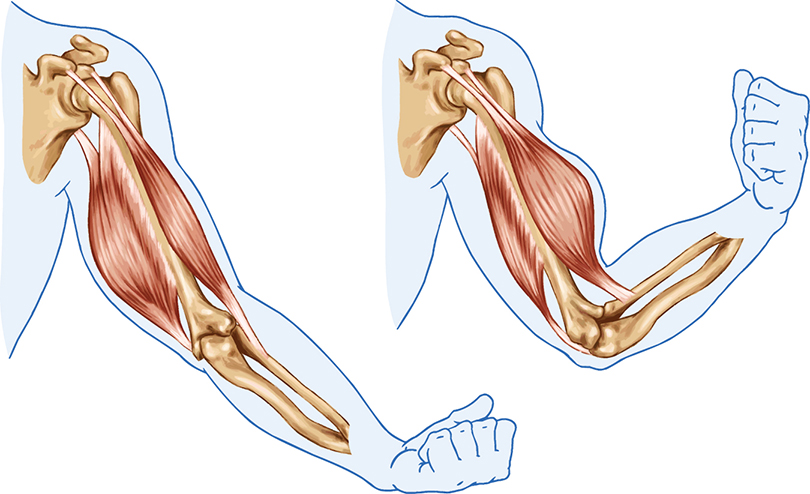
ON YOUR OWN 
9.Copy the two-column table into your science notebook. You will be analyzing some data to help you identify inputs and outputs for a process in which cells use food to power processes for life.
a.Write “glucose” as an input in the chart.
Inputs |
Outputs |
|---|---|
|
|
How the chart should look in your notebook.
WITH YOUR PARTNER 
10.Open Student Sheet 3.4.A: Molecules and Muscles. Discuss which strategy will best help you analyze data and gather evidence from the text and graphs.
11.Record a brief summary of what happens to the two molecules in your science notebook (below the inputs/outputs chart).
WITH YOUR CLASS 
12.Share out some of the details from your summaries and update the inputs and outputs chart.
13.Participate in a discussion about how we might investigate any molecules that are outputs.
14.Observe the demonstration of using bromothymol blue (BTB) as an indicator of the formation of carbonic acid.
SAFETY
Be sure to listen carefully to your teacher’s directions about performing the demonstration safely. You and a partner will be using the same procedure in the following steps.
WITH YOUR PARTNER 
15.Work together to design a test to observe the effect of exercise on carbon dioxide output.
•What would you expect to see if the output of carbon dioxide were to be impacted by exercise?
•How can you safely and efficiently use the indicator solution as part of a test to determine if the output of CO2 changes as a result of exercise?
16.When your teacher gives approval, gather the equipment needed and perform your tests. Safely clean up and return the materials as your teacher directs.
WITH YOUR CLASS 
17.Discuss the results of the carbon dioxide and exercise tests. Be sure to update your inputs and outputs chart to include carbon dioxide.
Model the reaction that converts inputs to outputs
WITH YOUR CLASS 
18.Use the image to determine the number of each type of atom present in a glucose molecule. Record the number and types of atoms in your science notebook.
Glucose and oxygen molecules are both inputs to the reaction system that provides energy to living things. Structural models help us visualize the arrangement of atoms in these molecules.
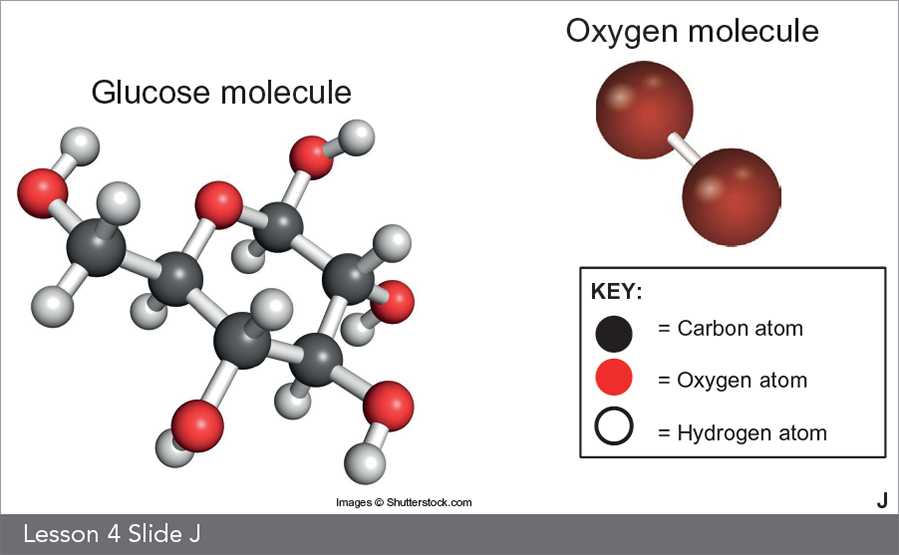
WITH YOUR PARTNER 
19.Get a bag of LEGO bricks to share with your partner. Note that the colors of the bricks match the colors in the image and represent different types of atoms (elements).
20.To model what is happening at the molecular level that explains our observations at the body system level, we will use the bricks to keep track of molecules and atoms.
a.Assemble one glucose molecule.
b.Use the other blocks to assemble six oxygen (O2) molecules.
•Note that it is not important to assemble the bricks in a particular shape.
CHECK
Make sure your group …
✓Thinks about the evidence we have that these molecules are inputs to the muscle system
✓Considers how each of these molecules are obtained by the cells in a muscle
✓Considers prior knowledge you have about chemical reactions
21.When glucose and oxygen react one output from the system is carbon dioxide (CO2). Assemble as many molecules of carbon dioxide as you can using the atoms (bricks) from the glucose and oxygen models.
22.Based on the types of atoms remaining, identify another molecule that is an output of the muscle system.
a.Add the molecule name and formula to your inputs and outputs chart in your science notebook.
b.Assemble as many molecules as you can with the bricks.
23.Use words or symbols to create a representation of the chemical reaction you modeled. Record your representation in your science notebook.
•Label the reaction system “cellular respiration.”
WITH YOUR CLASS 
24.Participate in a class discussion about whether our representations address something important about food—that food provides energy.
Investigate energy in the cellular respiration system
TURN AND TALK 
25.Turn and talk with your partner to share ideas for how energy might be represented in a model or equation for cellular respiration.
WITH YOUR PARTNER 
26.Recall the data you analyzed that provided evidence of the molecules that are inputs or outputs of the muscle system. Consider what might offer evidence that energy is transferred when glucose and oxygen react.
27.Look at Student Sheet 3.4.B: Evidence of Energy Transfer. Discuss which strategy will help you analyze the data.
a.After reading, record a brief summary in your science notebook describing evidence that energy has been transferred from food when muscles use glucose during exercise.
28.Look at Student Sheet 3.4.C: Energy in Systems. Set a purpose for the reading and use the Science Close Read Protocol for this text.
29.Discuss with your partner how to incorporate information from the text into the prior model of the cellular respiration reaction system.
a.Work together to update your representations in your science notebook to include how energy is transferred when matter is rearranged.
WITH YOUR GROUP 
30.Discuss the word “energy.” Pick a reporter to share out your group’s answer.
•What do we really mean when we say the word energy?
•What ideas do you have about what energy means? Work together to form one definition.
Investigate energy in the human body system
WITH YOUR PARTNER 
31.Find a partner and discuss which of the four daily activities will require the most energy to perform. Come to an agreement on your choice.
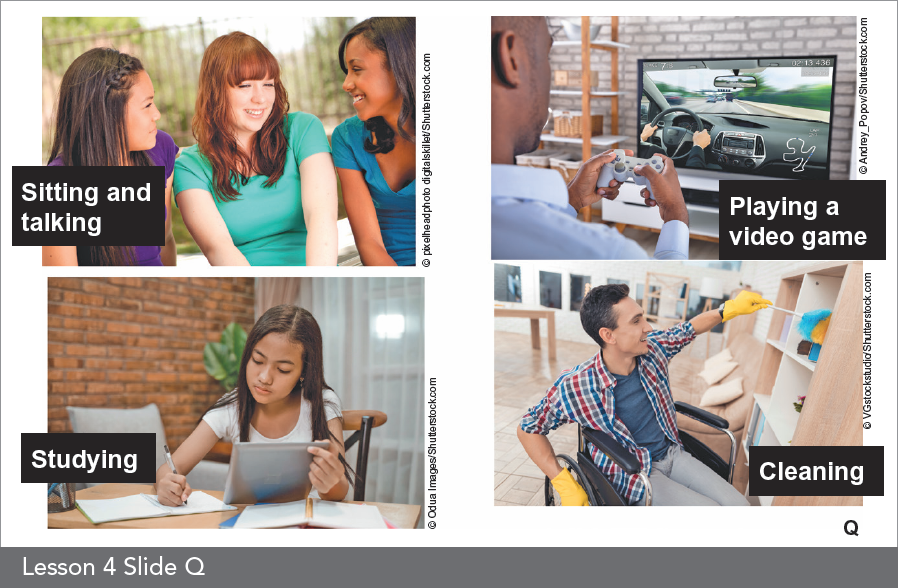
WITH YOUR GROUP 
32.Follow your teacher’s directions to organize into groups based on the activity you and your partner chose.
a.Each pair of students should share out the reasoning for their choice to the other group members.
b.After all justifications have been shared, pick one person to be the reporter for the group.
WITH YOUR CLASS 
33.Listen to the reporters share out from each group. Consider whether the justifications affect your thinking about which activity requires more energy to perform.
WITH YOUR PARTNER 
34.Open Student Sheet 3.4.D: Metabolism.
a.Read and interact with the text.
b.Discuss the reading and what you wonder about.
c.Participate in a class discussion about metabolism and the four corners activity.
35.Recall that infections, like Zach’s in unit 1, often result in fever. This response by the body has an “energy cost.” Compare the calories required to mount an active immune response to the calories required for other body functions. What do you notice? Discuss with your partner why you think there is a different number of calories needed for the immune response.
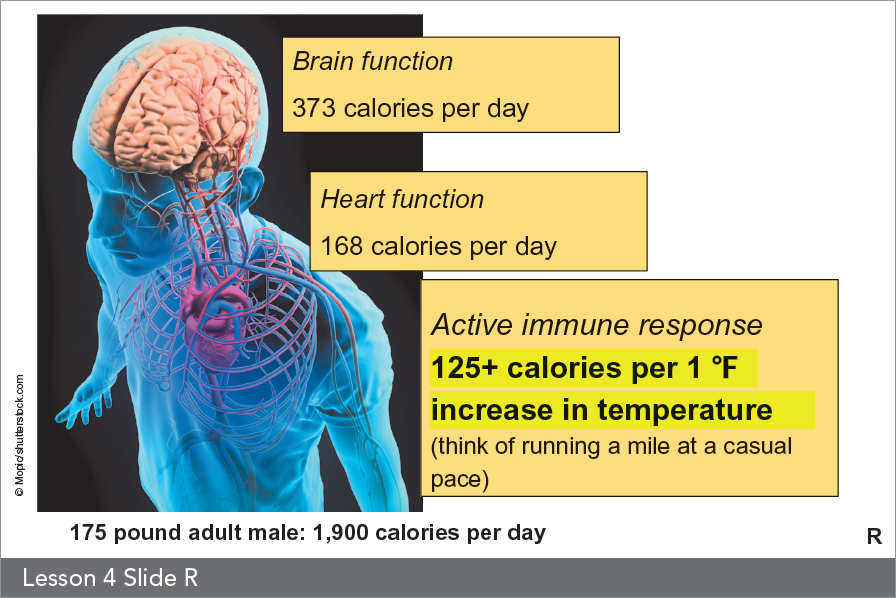
36.Consider what you have learned about what people need for a healthy diet. Discuss how the data for three conditions observed in children relate to calories and nutrition.
Investigate calories in food
ON YOUR OWN 
37.Record your ideas in your science notebook about what it means to say we burn calories. How do you think the calorie amounts of different foods are determined?
WITH YOUR CLASS 
38.Participate in a class discussion about what you learned previously about carbohydrates, fats, and proteins.
TURN AND TALK 
39.Turn and talk with your partner and discuss your ideas about how we might be able to use a change in temperature in a system to determine calories, the unit of energy for food.
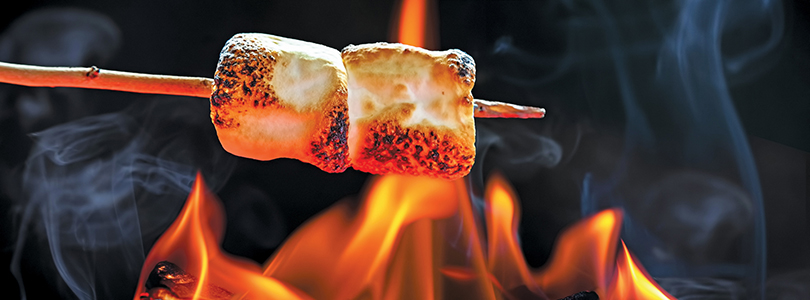
40.Consider the method for measuring calories in the illustration. Discuss with a partner ways in which you think the setup can be improved to determine the calories in a food sample.
A basic laboratory setup can be used to obtain an estimate of calories in food, or to compare two food items.
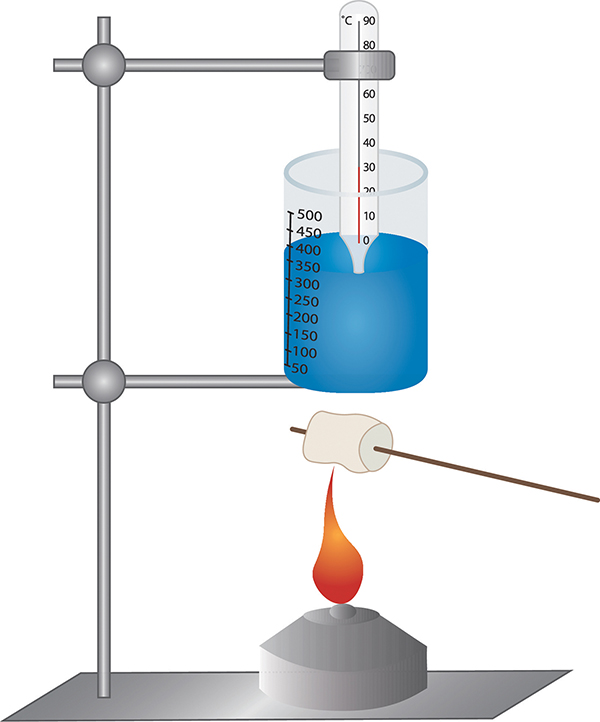
WITH YOUR CLASS 
41.Use the diagram to learn about how scientists use technology to determine calories in a laboratory. Participate in a discussion about how this design is similar to the previous procedure but has been improved to increase accuracy.
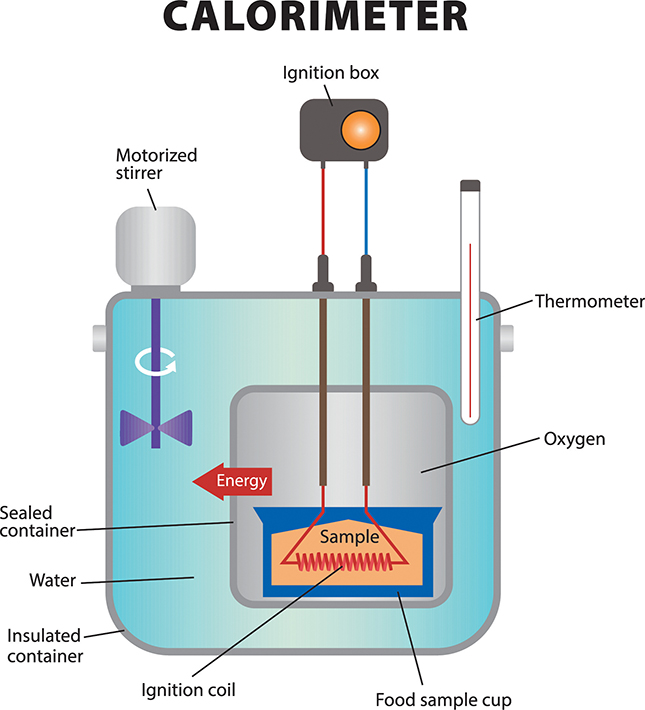
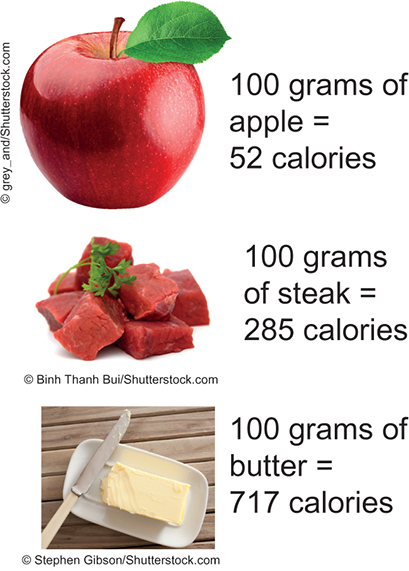
WITH YOUR PARTNER 
42.Look at Student Sheet 3.4.E: Analogy Map. Work together to identify components that are similar between the cellular respiration system and calorimeter system and complete the charts on the student sheet.
CHECK
Make sure you …
✓Use your science notebook as a resource.
Update the Model Tracker
WITH YOUR CLASS 
43.Participate in a class discussion to add words to the Word Wall. Also add words to your personal glossary.
44.Return to your unit 3 Model Tracker. Start an entry for Lesson 3. Participate in a class discussion about the lesson question and the ideas we have figured out from the investigations during the lesson.
ON YOUR OWN 
45.Independently complete the lesson Model Tracker entry.
a.What was the question we were trying to figure out in this lesson?
b.What were some of the things we figured out in connection to the lesson question?
c.If we were going to put some of these ideas in a model, how might we represent them?
SELF-ASSESS
Use the Model Tracker Self-Assessment and Feedback Tool to evaluate your model so far.
Reflect on other molecules in food
WITH YOUR CLASS 
46.Examine the structures of the examples of fat and protein molecules. Do you think these molecules can also be used in cellular respiration?
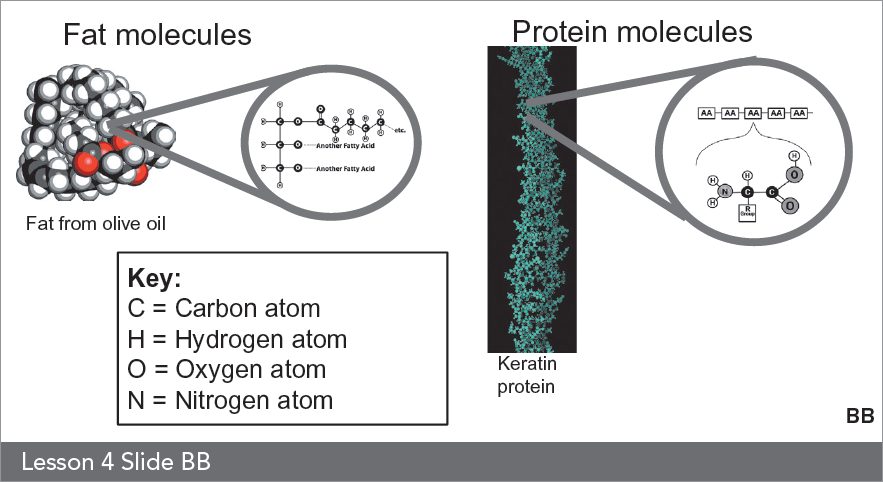
47.Read the information provided in the table. Participate in a discussion about what you notice and wonder.
Molecule |
Energy use |
Storage and access |
|---|---|---|
Carbohydrate |
Quick energy |
Excess glucose is stored as glycogen in your liver and muscles for access when energy is needed. |
Lipids (fats) |
Long-term energy |
Excess protein and sugars are converted into fats and stored in adipose tissue made of specialized cells for energy needs. |
Protein |
Used less often |
If glucose, glycogen, and fat are no longer available to your cells, muscle tissue can be broken down and the protein’s amino acids are used to build glucose for cells. |
The three types of macromolecules are used in different ways by the body.
TURN AND TALK 
48.Discuss with a partner:
a.Why do you think glucose and fats are used by the body for cellular respiration before using proteins?
b.What are amino acids used for in the body?
WITH YOUR GROUP 
49.Consider three conditions related to energy and nutrition. Explain which condition is least associated with protein being used as an energy source.
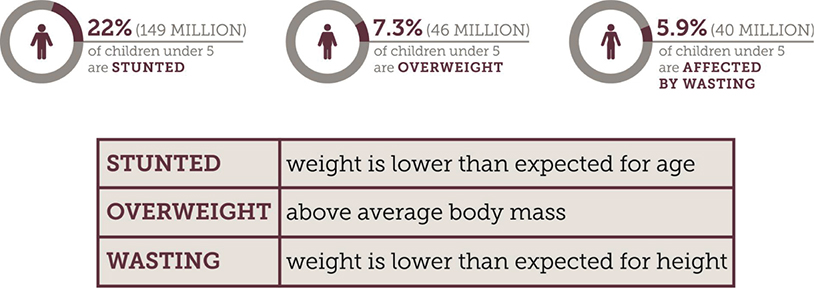
What should we do next?
WITH YOUR CLASS 
50.Discuss what we have figured out about inputs, outputs, energy transfer, and energy use. Add any new questions to the Driving Question Board.
51.Consider how a variety of food choices might meet our requirements for nutrition and energy.









